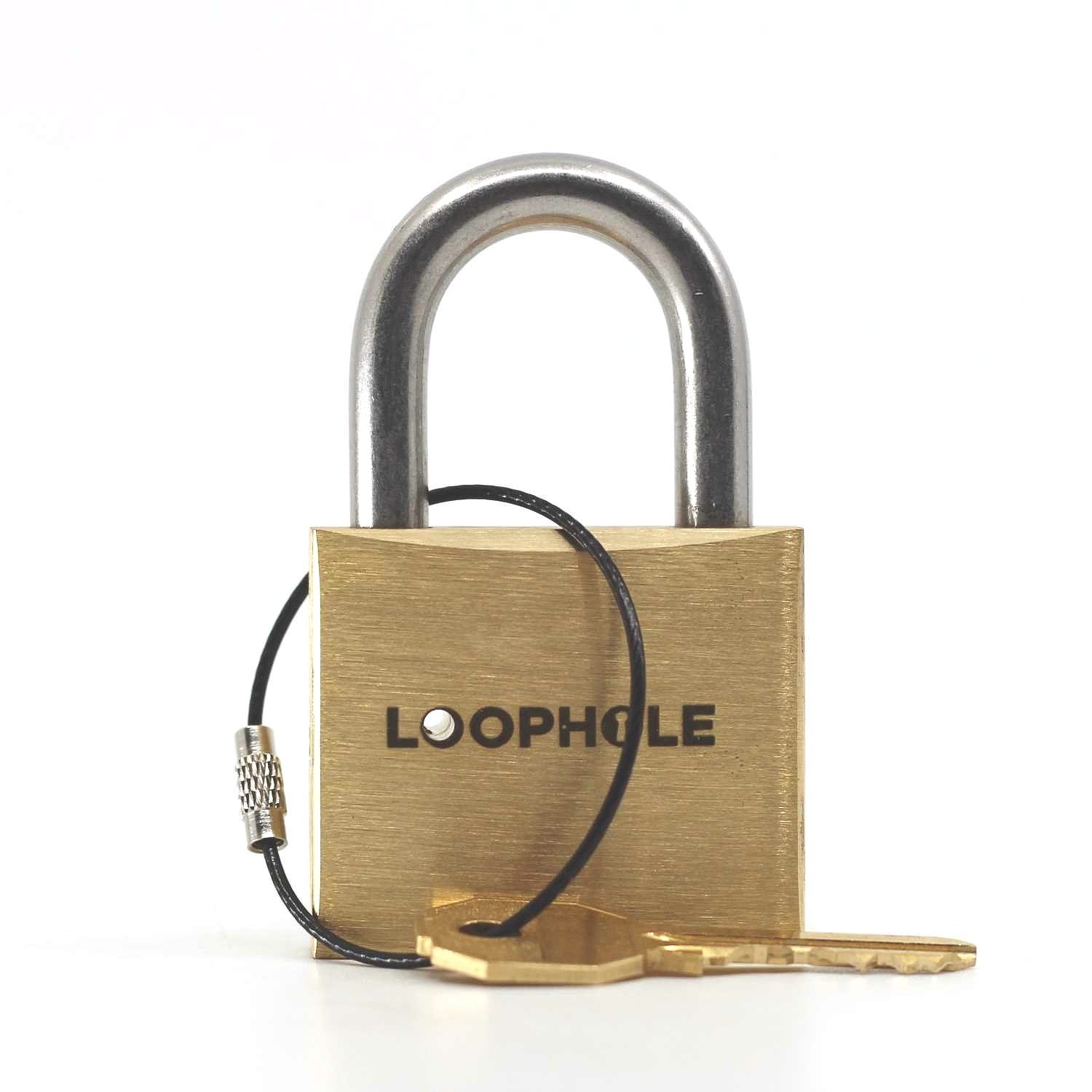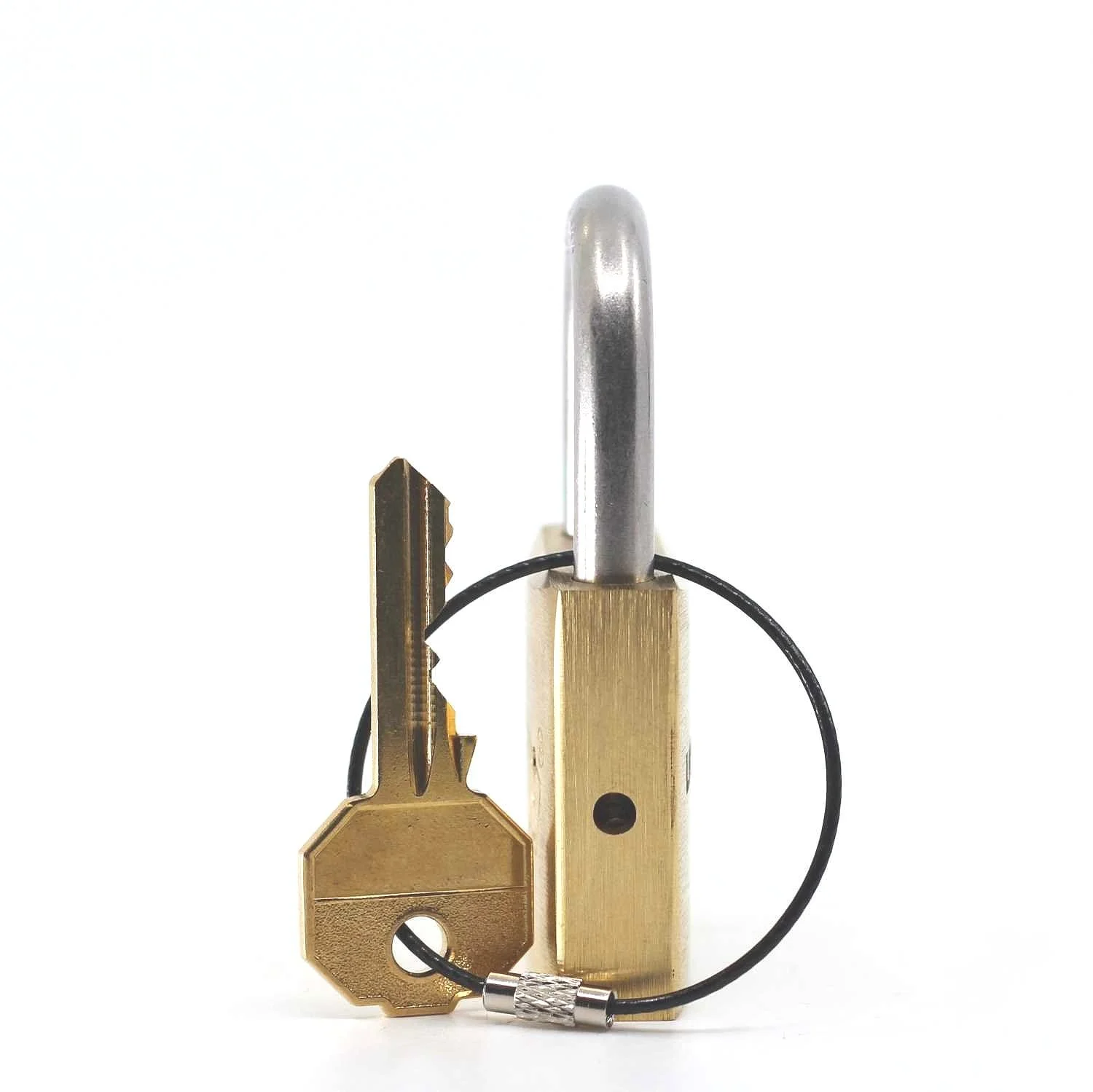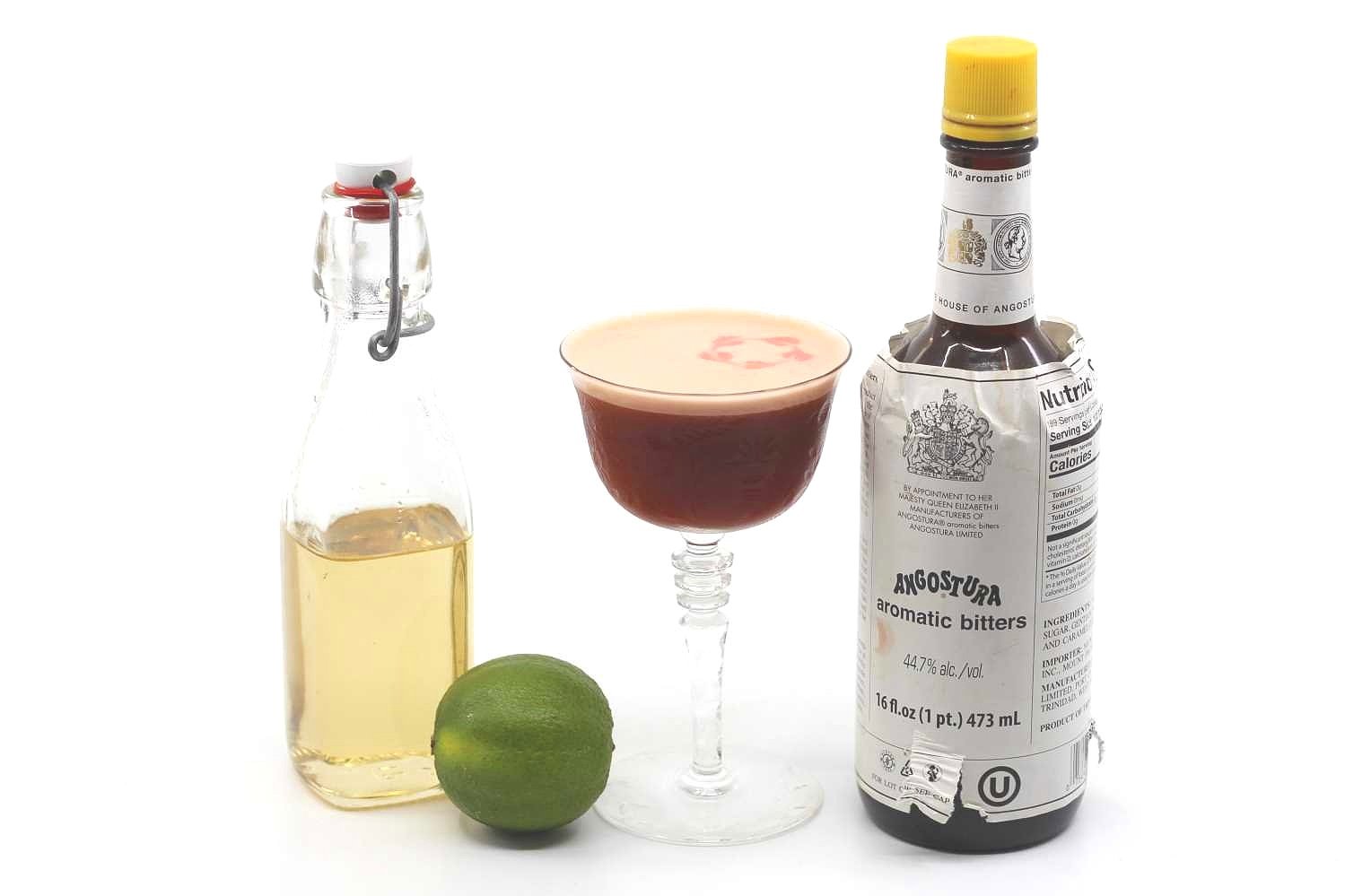Looping In
LoopHole
LoopHole by Boaz Feldman
I’m unlocking another episode of “Locks and Libations” this week on the blog to visit with our old friend Boaz Feldman, heir to the DanLock legacy and a brilliant puzzle maker in his own right. Way back at the very beginning of this adventure, with the very first article ever, I intentionally featured a puzzle that was definitively NOT a puzzle box, thus setting a precedent for any type of future offerings I might want to discuss. I didn’t want to box myself in, so to speak, and left that loophole there on purpose, which has now allowed me to leave this one, here.
LoopHole is a lovely little lock from Boaz, fashioned as usual from a standard Nabob padlock which he has cleverly modified. The standout feature is the clever hole in the “O” which runs right through the body. Boaz had been working on a new lock design for the holiday shopping season, when life threw him a curveball. “Loophole is different in that I had to come up with a new design fast, as my former design failed at the production stage... I planned on making the first one for XMAS and didn't want to miss the XMAS season … I had a really short time for everything.”
He quickly thought of a new idea: “It just came across my mind. In these locks, there's an existing hole at the front that is used to put a pin inside. That pin should usually prevent the shackle to come out completely once the lock is open. I thought it would be nice "to do something with this hole" :-)” Boaz’s brilliant idea was to exploit an existing feature of the locks, which would save a lot of time.
puzzle lock production
photo courtesy of Boaz Feldman
His experience and know how allowed him to pull things together at the last minute, even despite an unplanned trip to the States. “Then, I've been sent for two weeks to the USA and I had to stop everything almost at once. … However, I made it in 3 weeks, and that included design, a few prototype cycles, ordering parts, graphics, production, assembly, tests, packaging, etc. Fortunately, since I'm experienced enough in my area, everything went just perfectly. As for the failed design, I have the time now to review and fix, and maybe it'll be ready someday.
Boaz and the battleship
photo courtesy of Boaz Feldman
As for the trip to USA, it was for work but not for locks. I'm also a software engineer and had been sent to North Carolina for a job. I wish it was for vacation... I had one day off, that I used for traveling, and I visited the USS North Carolina battleship at Wilmington. As one that admires mechanic mechanisms, it was awesome to see how far they've made it in a ship from the Second World War time.” With one eye on possible future designs, Boaz is always looking to unlock new ideas.
unlocking a new idea?
photo courtesy of Boaz Feldman
Cocktail bitters are an odd footnote to the history of spirits which have been sustained literally over the millennia. The infusion of botanical matter into alcohol to produce bittersweet “medicines” can be traced back to the ancient Egyptians. These “stomachics” or tonics blossomed in the middle ages with the advent of pharmacognosy, the study of medicinal plants (some of which link directly to present day modern western medicines). Bitter alcohol infusions (“bitters”) found their way into cocktails first in nineteenth century Britain, when adding them to “Canary wine”, a type of fortified white wine (like port) became popular. The practice transferred to the new American colonies, where “miracle” elixirs were also springing up at every local pharmacy, and before long, the mix of a base spirit with a little water, sugar, and some bitters became known as a cocktail.
Angostura Sour
Arguably the world’s most popular bitters, Angostura, was invented in 1864 by Dr. Johann Siegert as a medicine for Simon Bolivar’s army in the Venezuelan town of that name. The elixir gained popularity and its production moved to Trinidad in 1875, where it remains today. The oversized label on the bottle, which inevitably ends up getting smashed and wrinkled, has been a charming feature throughout its history. Many cocktail bitters contain a potent dose of alcohol – Angostura, for example, contains 44.7% alcohol by volume – that’s practically 90 “proof”. Despite this, in the US and many other countries, bitters like Angostura can be purchased in a regular grocery store with no need for a liquor sales license. This “loophole” is because bitters like Angostura are considered “non-potable” and are classified as alcoholic non-beverage products (like vanilla extract for baking – another loophole!). Bitters taste awful, so no one in their right mind would drink them straight, and when using them, a dash or two is all that is needed (one “dash” is about one eighth of a teaspoon, which is about ten drops).
that’s the spirit!
Of course, we all know that person who likes to break the rules. If not, maybe take a look in the mirror. Naturally, there are cocktails with loads of Angostura bitters in them. There is even a bar in Wisconsin where patrons drink shots of the stuff. In 1939 spirits writer and bon vivant Charles H. Baker wrote about the Angostura Fizz in his Gentleman’s Companion, volume II, which featured Angostura as the main ingredient, and in 2009 modern cocktail pioneers Maks Pezuniak and Kirk Estopinal resurrected it as the Angostura Sour in their cult compendium Rogue Cocktails. The better-known and perhaps more well-balanced Trinidad Sour adds a little whiskey to the mix, but the Ango Sour remains pure and proves, perhaps, that rules are meant to be broken. Cheers!
exploit this pair
Angostura Sour by Maks Pezuniak and Kirk Estopinal
1 ½ oz Angostura Bitters
¾ oz lime
1 oz simple syrup
Egg white
Shake vigorously without and then with ice, strain into a coup. Peychaud’s droplet “loophole” garnish.
explore more:









